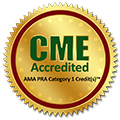
Wajieha Saeed
Mayo Hospital
Pakistan
Title: Efficacy and safety of carbon dioxide ablative fractional resurfacing (CO2-AFR) device in moderate to severe atrophic acne scars
Biography
Biography: Wajieha Saeed
Abstract
Acne has a prevalence of more than 90% in adolescents and persists into adulthood in almost 12-14% of cases with psychological and social stress of high intensity. There are many treatment options available for acne scars. Carbon dioxide (CO2) ablative fractional resurfacing is a new modality in laser techniques, for acne scars with more effectiveness and low side effect profile. An analytical experimental study was carried out at KEMU/Mayo Hospital, Lahore. Thirty patients of either sex with skin phototype IV & V, having moderate to severe atrophic scars were enrolled. Pre-treatment assessment of acne scars severity was done using Goodman & Boran qualitative scarring grading system. Patients were treated at 4 weeks internal with a maximum of 5 sessions. Follow up was done one month after the last session. Objective assessment was obtained at each session and graded according to percentage reduction in acne scars on a 4 point scale as excellent (>75% reduction), good (50-70% reduction), fair (25-50% reduction) and poor (<25% reduction). Side effects were noted at each session. Digital photographs were taken at the baseline, at each session and at follow up and were compared. The mean age of the patients was 21.6±2.2 years. There were 10 (33.33%) male and 20 (66.66%) female patients. A significant improvement in atrophic scars was observed. 12 (40%) patients showed good efficacy and 18 patients had fair efficacy. Erythema and edema followed by mild crusting was seen in all patients, which are cleared in 3-7 days with topical antibiotic. Very few patients developed post inflammatory hyper pigmentation.

